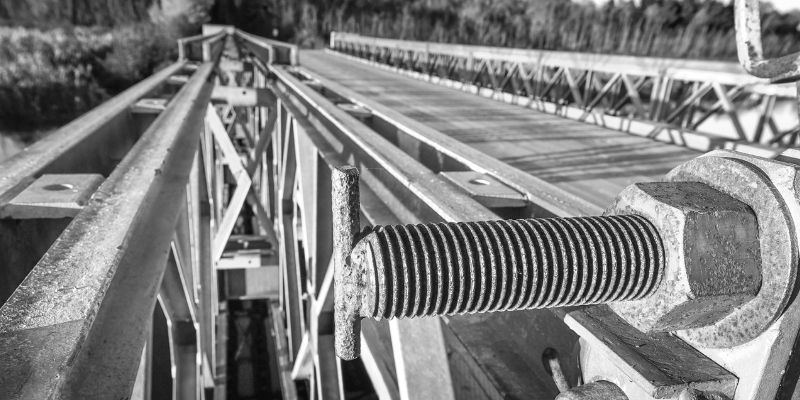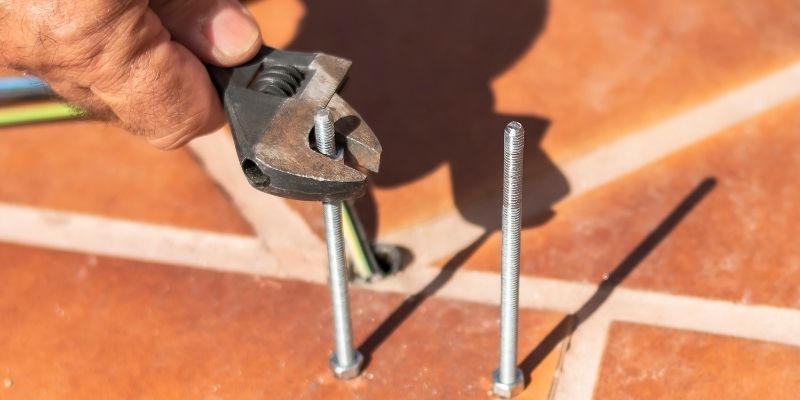Simply put, a threaded rod is just a metal rod that is screwed from one end to the other, so the alias is “all threads”. The other names used are threaded rod and stud; they are all the same.
Threaded rods are available in many types, lengths, and materials, and are one of the most versatile products that can be used for connecting materials. They are usually used to connect wooden and metal objects, but can also be inserted into wood or concrete to increase stability. They can also be used in plumbing applications.
Popular uses of threaded rods
Threaded rods are a popular and versatile product that can be found in many industries, including electrical, agriculture, and construction.
They are very suitable for industries where corrosive conditions exist; find a home in factory maintenance and other areas involving high humidity.


The length of the line can also be found where a clean and aesthetic appearance is required, such as in the areas of plumbing and contractors.
Other types of threaded rods are available. Because of their anti-corrosion properties, they are used in the medical, maintenance, and machinery industries. Threaded rod type Threaded rods are most often provided with a right-hand thread (turn clockwise to tighten).


Left-hand threaded rods can also be used in situations where vibration may cause the right-hand thread to loosen. We can also provide threaded rods with threads only on the end or with left/right threads on the opposite end for specific applications.
Different thread styles are also available, including ACME (or trapezoidal) thread, which has a 29° angle and provides high load capacity.
Threaded rod material types.
Threaded rods are available in a variety of materials, including various grades (4.8, 5.8, 8.8), 10.9, and 12.9) steel, as well as A2 stainless steel and A4 stainless steel.


Titanium and aluminum threaded rods are also popular, and nylon is becoming more and more popular because it is a strong, lightweight, and non-corrosive cost-effective choice.
We can also provide threaded rods of various special materials. Many of them are available from stock.
How to cut threaded rods to length.
Threaded rods are usually supplied in lengths of one meter, and some are also available in stock in two and three meters. If longer lengths are required, these can be customized.
An abrasive saw or a cold cutting saw can be used to cut the bar to a specific length. Cold cutting blades provide a significantly faster finish than abrasive blades because the latter leaves rough edges.
If an abrasive blade is used, the next step is to remove the rough edges left by the cutting rod. This is usually done using a grinding wheel to smooth the cutting end. Then any necessary beveling or chamfering cuts, which helps to connect the nut to the rod more easily.
What kind of threaded rod do you need?
Bars are available in various materials, lengths, and thread diameters, but if you can’t find the product you need, please tell us your specifications, and we will produce according to the order. If you are not sure, please call us for advice.
Threaded rods size and weight


| Thread Size | M2 | M2.5 | M3 | (M3.5) | M4 | M5 | M6 | M8 | M10 | M12 | (M14) | M16 | (M18) | |
| d | ||||||||||||||
| P | Coarse Thread Pitch | 0.4 | 0.45 | 0.5 | 0.6 | 0.7 | 0.8 | 1 | 1.25 | 1.5 | 1.75 | 2 | 2 | 2.5 |
| Fine Thread Pitch | / | / | / | / | / | / | / | 1 | 1.25 | 1.25 | 1.5 | 1.5 | 1.5 | |
| Fine Thread Pitch | / | / | / | / | / | / | / | / | 1 | 1.5 | / | / | / | |
| L | ±10 | 1000 | 1000 | 1000 | 1000 | 1000 | 1000 | 1000 | 1000 | 1000 | 1000 | 1000 | 1000 | 1000 |
| per 1000 units ≈ kg | 18.7 | 30 | 44 | 60 | 78 | 124 | 177 | 319 | 500 | 725 | 970 | 1330 | 1650 | |
| Thread Size | M20 | (M22) | M24 | (M27) | M30 | (M33) | M36 | (M39) | M42 | (M45) | M48 | (M52) | ||
| d | ||||||||||||||
| P | Coarse Thread Pitch | 2.5 | 2.5 | 3 | 3 | 3.5 | 3.5 | 4 | 4 | 4.5 | 4.5 | 5 | 5 | |
| Fine Thread Pitch | 1.5 | 1.5 | 2 | 2 | 2 | 2 | 3 | 3 | 3 | 3 | 3 | 3 | ||
| Fine Thread Pitch | / | / | / | / | / | / | / | / | / | / | / | / | ||
| L | ±10 | 1000 | 1000 | 1000 | 1000 | 1000 | 1000 | 1000 | 1000 | 1000 | 1000 | 1000 | 1000 | |
| per 1000 units ≈ kg | 2080 | 2540 | 3000 | 3850 | 4750 | 5900 | 6900 | 8200 | 9400 | 11000 | 12400 | 14700 | ||